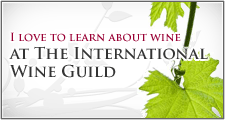For many former students, science was a class where it was hard to get excited. All the talk of human cells, the lectures on atoms, and the discovery that a hypothesis is not a huge, plant-eating African mammal was enough to make someone want to stick their head inside a Bunsen burner. While it may have been a boring subject in youth, in adulthood the science of wine is particularly interesting, making even those of us who hated everything from anatomy to zoology willing to raise our test tubes in a toast.
There are many scientific avenues of wine. From climate to fermentation, from the way wine is stored to the way is it sipped, science is behind nearly every aspect of wine, placing an arm around each grape and urging it forward. One aspect of wine where science is particularly interesting is the area of wine glasses, specifically Riedel wine glasses. It was the Riedel Company that first took the wineglass and made it both a form of science and a form of art.
Claus Riedel lived, worked, and invented by the belief that wine can be emphasized by the shape and design of a glass. With this belief, he set out to invent a line of wine glasses that would unite the wine’s personality, its aroma, its taste, and its visual appeal. An avid wine drinker only need to drink out of a Riedel wine glass once to discover that Claus succeeded in his pursuit: he successfully designed wine glasses that would accentuate the best parts of the various types of wine. While it’s obvious that his conquest was successful, the reasons why it was successful, the reasons why his way of thinking worked, aren’t as clear. For these answers, we turn where all things unclear turn: towards science.
As we all know, there are five senses that drive the human perception: sight, hearing, smell, taste, and touch. When it comes to wine, the sense of smell is as important as the sense of taste. It is with this sense that Claus Riedel began, beating the competition by a nose and so much more.
The sense of smell and the sense of taste in humans and many mammals go hand in hand, the way we smell dictates how we taste. This is because the sense of smell and the sense of taste both have a role in how the brain perceives flavor. This is why a person’s sense of taste is hindered when they are plagued with a stuffy nose. While we have five taste sensations - sweetness, sourness, bitterness, saltiness, and umani (a Japanese word that means “Savory” or “Meaty”) - we have roughly a thousand genes geared towards odor perception. Because of this, the aroma of the wine - its intensity and its quality - can change the taste of it.
The Sense it Makes
With this knowledge, Claus Riedel began designing glasses with bowls of different shapes. These shapes sent the wine flowing to the tongue while trapping the wine’s aroma in a glass, directing them towards the nose.
Wine begins to evaporate when it is poured, quickly filling the glasses with flavorful levels of aroma. The rate at which aroma fills the glass depends on the density and heaviness of the wine. While the lightest vapors rise to the top, the heavier ones remain at the bottom. With this knowledge, Claus Riedel was able to make glasses geared towards the aromas and odors of all the different grapes.
Claus realized that the shape of the glass, while dictating emission of aroma, also dictates how a person positions their head while drinking, ultimately altering the way the wine flows into their mouth. Because drinkers of wine all drink with the goal of not spilling a single drop, they willing alter the position in which they sip. Where wide, open glasses force a drinker to lower their head, narrowly designed glasses force a drinker to tilt their head back. This delivers the wine to different zones of the tongue, resulting in the brain perceiving different flavors. The volume of the wine glass, the diameter of its rim, the thickness of the crystal, and the finish also all play a role in the roll of the wine onto the tongue.
The rim, in particular, controls the flow of wine, with certain rims possessing an open waterway and others building a bit of a damn. A cut rim, for example, allows the wine to flow onto the tongue in a smooth, consistent manner. A rolled rim, conversely, slows the flow of win, causing acidity and tartness to be enhanced.
In order for this process to work successfully, Claus also maintained that perfect wine glasses need to be clear, undecorated, thin-walled, polished, shaped like an egg, and made of crystal. In other words, perfect wineglasses need to be Riedels.






